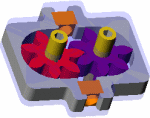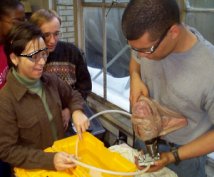 |
|
 |
| I am interested in any suggestions/comments you have about the course/content. |
PTS Guided
Tour & Questionaire
|
|
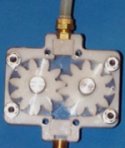 Pump Made From Solid Model [Most parts Made on LMP Abrasive Waterjet] |
|
Emphasis is placed on "hands-on-learning." Approximately 20% of time will be spent in lectures and 80% in lab/workshops taking apart machines.
|
|
||
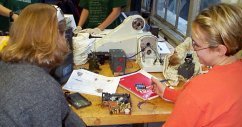 Katin Shields & Jennifer Blundo work on a tape recorder and several gear boxes. |
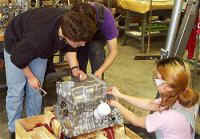 Students disect a 6 cylinder engine. |
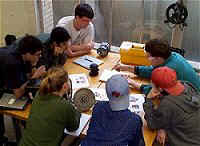 In lab, students take apart machines, learn how they work, then explain how they work to others |
|
![]()
Gaining skill and knowledge about how things work, specifically:
| Skill / Knowledge | How Acquired | |
| Understanding of how many devices operate | Taking a multiplicity of machines apart and using/running them | |
| Ability to learn/determine how things work | Lectures and lab exercises on using geometry/structure, physics, and flow (material, information, energy, etc...) in machines/devices to determine how machines work. | |
| Ability to explain how things work to others | Explaining operation of machines you take apart in your lab write ups and to other students | |
| Ability to create, rotate, translate, and otherwise visualize 3D objects | Sketching the machines/parts and solid modeling some of them | |
| Understanding fo the limiting and dominant physics of many machines | These will be covered in the workshops and you will use them in lab | |
| Understanding of how geometry is linked to and affects performance | Geometric modeling, mathematical modeling, and by making working model(s) | |
| Knowledge of some machine elements and how they are used | You will see a wide variety of machine parts/elements in lab and on field trips |
![]()
Special thanks to our sponsors and the following people for
their advice and support in making this class a reality:
| Prof. Suh | Prof. Abeyaratne | Prof. Slocum | Prof. Trumper | Prof. Flowers |
| Zafar Shaikh | David Rodriguera | Maureen Lynch | Lee Knight | Richard PerdichizzI |
| William Culpepper | Donald Weiner | Peggy Garlick | Gerry Wentworth | Asha Balakrishnan |
